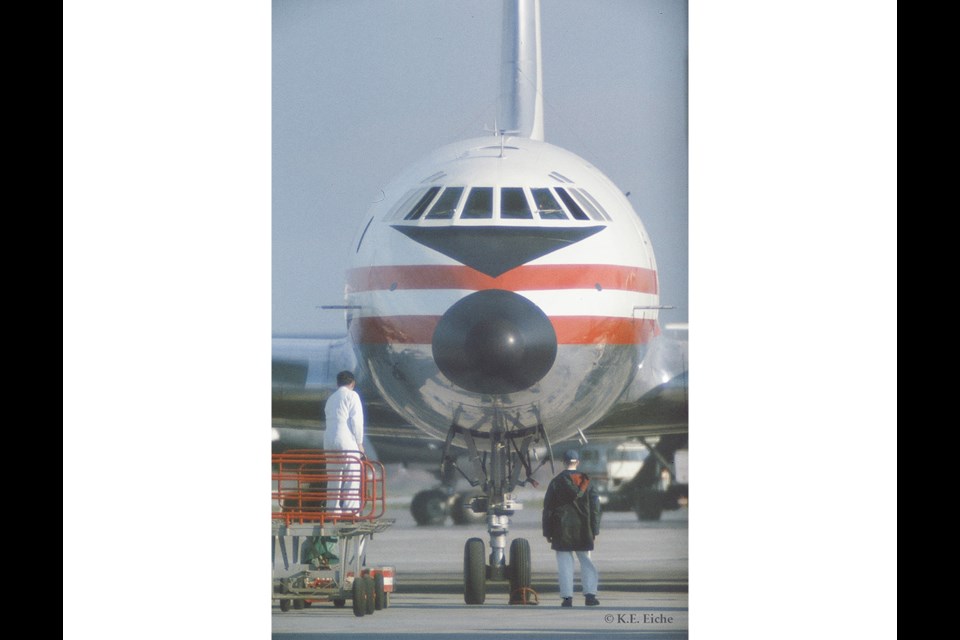Fifty-nine years ago, my parents and I took our first trip back to Germany after having emigrated in 1956. It was August 1961, and we flew on Canadian Pacific Airline’s Britannia turboprop aircraft, flight 352 from Vancouver to Amsterdam.
The Britannia was developed by the Bristol Aeroplane Company in 1952, but there were several delays in production, and soon after the Britannia started flying, in February 1957, it had to compete with the Boeing 707 jetliner (its first flight was in December 1957). The Britannia didn’t last long in the race. Of the 180 aircraft that were projected, fewer than 100 were sold.
Canadian Pacific Airlines purchased six Britannias, the first of which arrived on April 1, 1958. A special hangar had been built for them at Vancouver International Airport in 1958 (it still stands, in the South Terminal area of the airport). Two more Britannias were added in 1959. The aircraft was popularly known as “The Whispering Giant” because of its quiet exterior noise and smooth flying.
All of Canadian Pacific’s Britannias were built at Shorts, an aerospace company in Belfast (bought by Bombardier in 1989). Grant McConachie, then general manager of Canadian Pacific Airlines, wanted the Britannias to break the monopoly that Trans Canada Airlines enjoyed on the transcontinental routes, but TCA’s DC-8 aircraft proved faster and more popular. By February 1966, Canadian Pacific had sold off its fleet of Britannias, which were acquired by the charter carriers Caledonian Airways, Transglobe and Cunard Eagle.
Although we went on several more trips to Germany over the years, it was the flight with CPA’s Britannia that stayed in our memory as the most comfortable and most enjoyable of all. Compared to what air travel eventually developed into – an endurance test involving standing in line for hours, sitting in narrower seats with reduced leg room, fighting for space in overhead bins – flying economy class in the Britannia seems closer to today’s experience of flying in business class. That impression is not a rosy memory well-seasoned with nostalgia – it’s confirmed by the photographs my father took of my mother and me sitting inside the cabin.
Nowadays, unless you’re flying business or first class, you dress as though you were prepared to rough it. Sixty years ago, even in economy class people dressed in their Sunday best, as if flying were a special occasion, which it was. At the end of the journey, the passengers did not look any the worse for wear. Of course, it helped that the Canadian Pacific Britannias accommodated only 89 passengers on the long haul flights.
I’ve heard it said that flying will never be the same after this months-long interruption in normal air traffic caused by the pandemic. If that means that fewer people will be flying, that there will be shorter lines, more spacious seating and more room to stretch out one’s legs, then I can only hail it as a welcome return to a more civilized, bygone era of travel, as I experienced in 1961.
Sabine Eiche is a local writer and art historian with a PhD from Princeton University. She is passionately involved in preserving the environment and protecting nature. Her columns deal with a broad range of topics and often include the history (etymology) of words in order to shed extra light on the subject.



